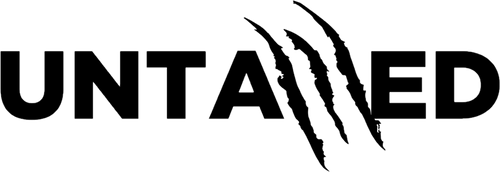Understanding the impact of hormonal fluctuations during the menstrual cycle on athletic performance is essential for female CrossFit athletes seeking to optimise their training. In this blog post, we will focus on the days 1-5 of the menstrual cycle, known as the Early Follicular Phase or Menses, and explore how you can adjust your training to maximise performance during this period.
The Early Follicular Phase (Menses) Explained
The Early Follicular Phase (Menses) is characterised by the shedding of the uterine lining and low levels of estrogen and progesterone. For many women, this phase also involves physical and psychological symptoms, such as cramping, bloating, fatigue, and mood swings 1. While these factors pose challenges for exercise, research suggests that modifications to training can help improve performance during this time.
Training Tips for the Early Follicular Phase.
For females participating in CrossFit, following the same progressive programming as their male counterparts can be counterintuitive. However, this is not to say that you cannot lift or do double unders and perform well in gymnastics. However, tiny adaptations can improve your training and lead to better long-term improvements.
Prioritise low-intensity and restorative exercises
Focusing on low-intensity workouts or therapeutic exercises can help alleviate physical discomfort during the first few days of the menstrual cycle. Movements should based on strict technique. Try to avoid dynamic gymnastics, but focus on your strict progression. Keep intensity lower in your lifts 50-60% of 1RM, and reduce volumes where appropriate. Avoid movements like toes to bar or ab crunches, but as discomfort subsides, you can reintroduce them if you feel comfortable.
Avoid maximum-effort lifts and high-intensity workouts.
Due to the potential for increased fatigue and reduced pain tolerance during the Early Follicular Phase1, you may avoid maximum-effort lifts and high-intensity workouts during this time. Instead, focus on moderate intensity and volume strength training exercises, giving your body sufficient rest intervals to recover, and introducing E2MOM type workouts or even 1 minute on, 1 minute off. You might also stick to lighter weights than usual (12kg dumbbells instead of 15kg or a lighter wall ball).
Stay mindful of your body's signals.
While staying disciplined with your CrossFit training is essential, it's also crucial to listen to your body and respond to its signals during the Early Follicular Phase. Know your energy levels, pain, and discomfort, and adjust your training plan accordingly. Individual experiences can vary, and what works for one athlete may not be suitable for another. Reduce the rounds of a workout from 4 to 3, or stay at the same weight as opposed to building.
Stay hydrated and maintain proper nutrition.
Proper hydration and nutrition are vital in mitigating fatigue and discomfort during the Early Follicular Phase. Drinking enough water and consuming a balanced diet – rich in lean proteins, complex carbs, and healthy fats – can help support your body and improve exercise performance during this period 3.
Utilise breathing techniques and mental strategies
Incorporating breathing techniques and mental strategies, such as meditation or visualisation, can help to manage stress and enhance focus during workouts. Research has shown that such methods can improve athletic performance by fostering a sense of calm and improving mental resilience 4.
Final Thoughts
The Early Follicular Phase (Menses) can present unique challenges for female CrossFit athletes. Still, by effectively adjusting your training plan, you can continue progressing and excelling in your fitness journey. Remember to consider your individual experiences and be flexible in adapting your training to support your body better during this time.
In our programming, we have taken these into account, and whilst you will still be able to follow the movements, how we have adapted them should give you the latitude you need to complete them but still feel comfortable and be able to wake up and train the next day. However, if you
Sources:
Footnotes
- Julian, R., & Hecksteden, A. (2019). Menstrual Cycle and Performance in Athletes. In Mujika, I., Sports Science Handbook Volume 1. Manchester, UK: Multi-Science Publishing. ↩ ↩2
- Stachenfeld, N. S. (2008). Hormonal Changes during Menopause and the Impact on Fluid Regulation. Reproductive Sciences, 15(3), 292-299. ↩
- Lim, S. S., Hutchison, S. K., Van, R., & Thompson, C. H. (2007). Effect of menstrual cycle phase on exercise performance in eumenorrhoeic women. British Journal of Sports Medicine, 41(12), 942-950. ↩
- Jack, S. J., & Ronan, K. R. (1998). Sensation seeking among high- and low-risk sports participants. Personality and Individual Differences, 25(6), 1063-1083. ↩
